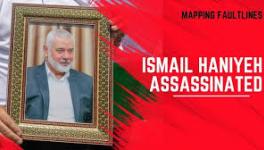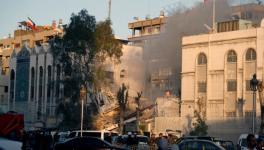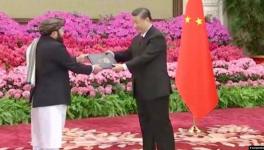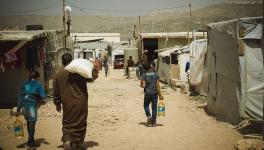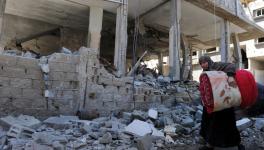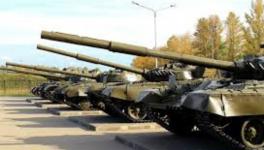It's Bombs Away for the USA in Libya
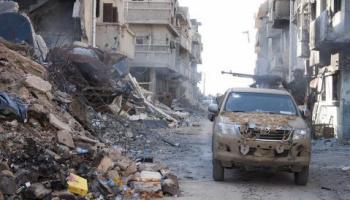
Image Courtesy: Reuters
The United States returned to aerial bomb Libya. The target is Islamic State (IS) positions in the north-central city of Sirte. IS has held Sirte and its surrounding areas since last year. Sirte is the birthplace of Muammar Qaddafi, who was also killed there. After the fall of the Qaddafi government, this central Libyan town languished. It had become the playground of the Libyan Dawn – the militia of the town of Misrata, led by Salah Badi – and later the Libya Shield Force of Benghazi. The latter had close ties to al-Qaeda and is now part of the Shura Council of Benghazi Revolutionaries. When the Islamic State attacked Sirte last year, the various militias had little incentive to stay. They delivered the city to the Islamic State and withdrew to their own hometowns. Attempts to erode the Islamic State by other militias and armies have thus far failed.
The US military says that it will continue to conduct bombing raids on IS positions as long as necessary. While there are US Special Operations troops in Libya, they are not engaged in this action. The Government of National Accord (GNA) – led by Fayez al-Sarraj – invited the United States to bomb the Islamic State. The GNA’s attempt to defeat the Islamic State on the ground has stalled after some rapid movement into the city. Aerial bombardment by the United States, it is hoped, will refocus the GNA troops towards their objection – the seizure of Sirte from the Islamic State.
These are not the first US strikes on Libya. It is important to remember that it was the US-led NATO war on Libya in 2011 that broke the Libyan state – destroying its institutions and allowing the West’s preferred rebels to chase out anyone with links to the government. This is precisely what the US occupation had done in Iraq; it was repeated in its details within Libya (I show this in my new book, The Death of the Nation). A Libya with a weak institutional scaffolding rapidly descended into chaos. Town-based militias took control over their domains, fighting between towns for control over the hinterland. Older extremist forces – the Libyan Islamic Fighting Group – returned to authority, with some of their fighters who had experience in Afghanistan and Iraq now leaders in their hometowns. Many of these young men went to Syria via Turkey to fight against the government of Bashar al-Assad. Once the West began to bomb IS targets in Syria, they came home to set up their own vilayat of the Islamic State. Fighters from other parts of North Africa – particularly Tunisia – joined them as they seized Sirte and its surrounding areas. The US bombed their positions last November and then again this February – to no avail. They dug in.
Benghazi is a real place
In the United States, ‘Benghazi’ has become a slogan. It has come to mean that Hillary Clinton is not trustworthy. But Benghazi, of course, is a real city in eastern Libya with a population of over six hundred thousand people. It is a city in great distress, its unity fragmented and its people traumatized by an endless war that is taking place within the heart of its residential areas.
As the US bombed the IS positions this week, a massive car bomb struck Benghazi. This bomb killed at least twenty-two people and wounded twenty others. The bomb went off in the Guwarsha residential district in Benghazi, which has been the frontline for the past two years between various Islamist extremists – including the Islamic State – and the Libyan National Army led by a former CIA asset, General Khalifa Hafter. The various Islamist groups are mostly under the command of the Shura Council of Benghazi Revolutionaries, which includes Ansar al-Sharia. The most extreme elements of the latter joined the Islamic State. The Shura Council has taken responsibility for the most recent bomb blast.
The Libyan National Army has conducted its own airstrikes against the Shura Council and Islamic State forces in both the Guwarsha and Ganfouda neighborhoods of Benghazi. In late June, the Libyan National Army carried out particularly severe bombing of these areas. Civilian casualties are suspected, although it is hard to verify what is going on within areas controlled by the Islamic State and the Shura Council. Al-Qaeda in the Islamic Maghreb’s leader Abu Ubaidah Yusuf al-Anabi, in an audio message, called on Libyans to fight the ‘Franks’ in Benghazi. He also called upon the Libyan National Army to allow women and children safe passage from Ganfouda. Haftar’s advisors rejected this proposal. A MIG-23, flown by the highly-regarded Major Idris Hamed al-Obeidi, was shot down in Ganfouda in early July. Mercy is not on the lips of his comrades.
Fragile politics
Politics in Libya remains fragile. The Government of National Accord (GNA) emerged out of desperation. Two parallel governments – one in Tripoli and one in Tobruk/Bayda – had established themselves. They had begun to create parallel institutions, including two oil ministries. Meanwhile, in Benghazi, General Khalifa Hafter acted as a third government, unwilling to bring himself under civilian control. He began a war on the Shura Council in order to take Benghazi as his prize after being chased out of Tripoli. Pressure from the United Nations and the West forced the two governments of Tripoli and Tobruk to merge. They selected al-Sarraj, who comes from a family of Libyan grandees, to take the helm. Al-Sarraj came from the Western-backed Tobruk government. He has had a hard time gaining the trust of the Islamists of the Tripoli government.
When the new GNA passed Decree no. 1, which sought to bring all military forces under civilian command, General Hafter was not on the list. Nor was Ibrahim Jadhran, the head of the Petroleum Facilities Guards, who controls a swathe of Libyan oil lands. In Tripoli, the avarice of Haitham Tajouri and his militia competes with the old al-Qaeda hand Abdelhakim Belhaj. Al-Sarraj might be the leader of the GNA, but in Tripoli he exists at the mercy of these warlords. When the GNA prepared to release twelve men accused of crimes against the uprising of 2011 last month, unknown assailants executed them in the Ain Zara prison – just south of Tripoli. This is an example of how the armed militias continue to exercise control over Libyan society, with no expectation that the GNA could tether them. Libyan institutions – weak already under Muammar Qaddafi and then destroyed by the NATO war – are not strong enough to consolidate power. It is this weakness that will allow the Shura Council and the Islamic State to maintain its authority.
What will the US airstrikes do in such a brittle political environment? An advisor to the GNA says that they hope these airstrikes will allow their troops to take back Sirte. If they do so, he says, then the West and the UN will lift the sanctions that thus far prevent $67 billion of Libyan sovereign funds from being in the control of the Libyan government. The price for this money is to help remove the Islamic State. The West, in other words, is holding the money hostage till Libya’s government goes along with its agenda. It is important, therefore, to acknowledge that when the Libyan government requests US airstrikes, it does so not of its own volition but because of the conditions for the release of its own money. The airstrikes weaken the Libyan government. People are already saying that even General Haftar conducts his own airstrikes. He does not ask the Americans for help.
Will the airstrikes actually degrade and destroy the Islamic State? It is not merely the Islamic State that is Libya’s problem. Airstrikes such as this will only move these fighters to other locations – to Tunisia, for instance, or to Benghazi. They will continue to be a serious problem in North Africa. Indeed, if they return to Tunisia, they will bring great peril to that country, which has only just seen its head of government lose a vote of no-confidence. In March, the Tunisian town of Ben Guerdane, on the Libyan border, saw virulent clashes between IS and the Tunisian army. What is now being called ‘Islamo-gangsterism’ has entered Tunis’ slums such as Ettadhamen. These are increasingly tinder-boxes. Or they will head to Benghazi, where the battlefield has destroyed the city that started the uprising of 2011.
Get the latest reports & analysis with people's perspective on Protests, movements & deep analytical videos, discussions of the current affairs in your Telegram app. Subscribe to NewsClick's Telegram channel & get Real-Time updates on stories, as they get published on our website.










